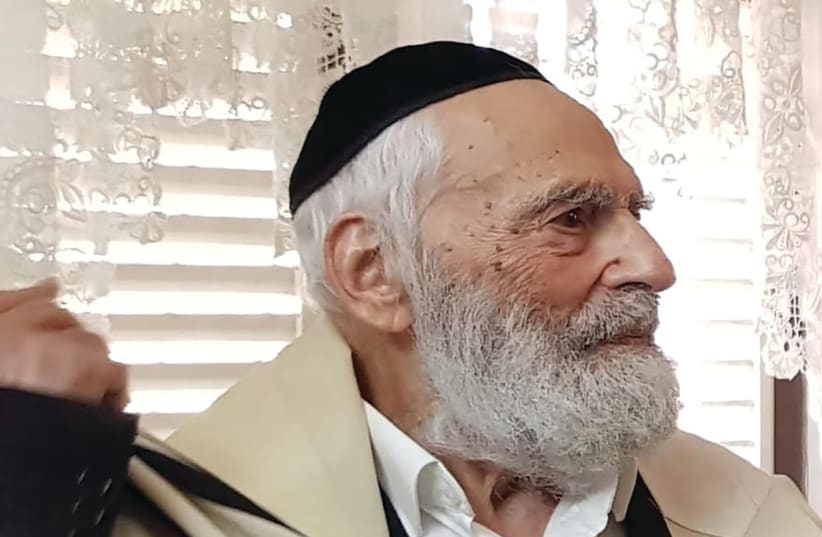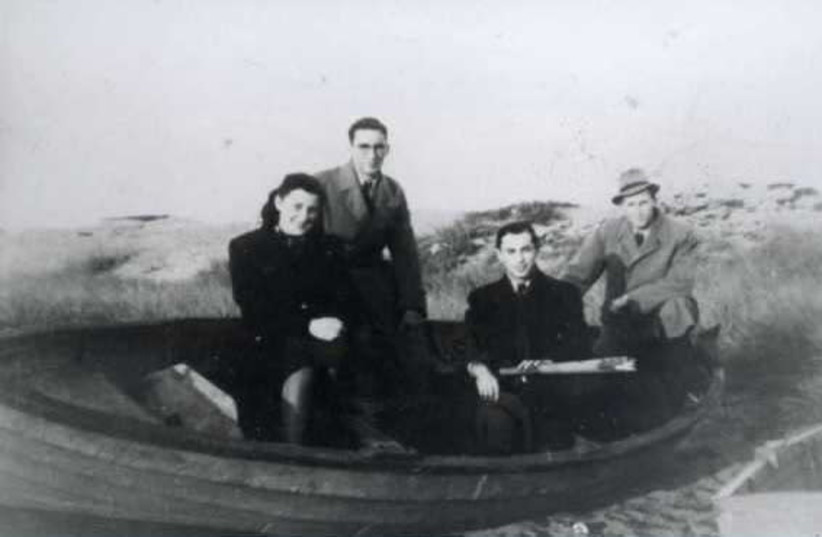THE SAGA of the Jews of Denmark during the Nazi occupation is one of the few uplifting stories that emerged from World War II, casting a glimmer of light in the darkness of the Holocaust. Although 470 Jews were rounded up by the Nazis and deported to the Theresienstadt concentration camp in Czechoslovakia, during October 1943 some 8,000 Jews managed to find refuge in neutral Sweden.
Many Danes demonstrated their resistance to the German occupation and the Nazi ideology by standing by their Jewish compatriots and participating in the rescue efforts. Jews, of course, were also active and one of the heroes of those endeavors is David Sompolinsky. He has lived in Israel since 1951, and celebrated his 100th birthday in Bnei Brak in August.
The epithet “hero” is very apt for Sompolinsky. One of the most important escape routes to Sweden during the war was organized by the Lyngby resistance group, which ferried about 700 Jews across the strait between Denmark and Sweden. The leader of the group was Aage Bertelsen, who in his book October ’43 wrote: “In some regard, this young Jew was the actual founder of the aid work in Lyngby […] unwavering, literally day and night, David was active in helping with absolutely no concern for his own safety.”
The Danish-born student was the son of a religious Jewish family, which immigrated to Denmark from Eastern Europe in 1914. His contribution to the Lyngby group was only one out of many activities he undertook to safeguard his co-religionists. In 1942, a Danish Nazi had attempted to set fire to the main synagogue in Copenhagen. In response, young Jews formed a security guard, patrolling the synagogue at night. In Sompolinsky’s memoirs, available at the Yad Vashem archives in Jerusalem and on YouTube, he recounts: “The only weapons available to us were batons and a direct phone line to the police.”
In her dissertation on the plight of the Jews during the Nazi occupation of Denmark, “The Jews of Denmark during the Holocaust,” Israeli researcher Leni Yahil highlighted Sompolinsky’s efforts and wrote that he was active in hiding Jews from early in the German occupation and organized both aid and escape for them along with the staff at the Copenhagen Municipal Hospital.
Following the German invasion, Sompolinsky began working with the Cecilia Pels group. Pels fled to Denmark from Hamburg as a refugee and lived in a Jewish retirement home in Copenhagen. From there, she organized distribution of aid parcels to desperate Jewish refugees all across Nazi-held territories. Sompolinsky was intensely involved in this highly dangerous activity. The Pels group’s activity has been documented by Yad Vashem.
On September 29, 1943, Sompolinsky and his family were tipped off to the planned roundup of Jews. He contacted Jews outside of Copenhagen who were in danger. In the Danish capital, he warned groups of Jews to get ready to flee as they gathered to celebrate the Jewish New Year. He was unable to persuade the inmates of the Jewish retirement home to leave the home, which he later described as a tragic failure. These elderly Jews were rounded up and deported by the Nazis, several of them dying in the Theresienstadt concentration camp.
Sompolinsky’s family managed to escape to Sweden in the beginning of October 1943, but he chose to stay in Denmark and get as many more Jews to Sweden as possible. In his testimony to Yad Vashem, he related that the Municipal Hospital hid Jews under false names and fake illnesses. Jews were smuggled under the noses of the Nazis from the hospital to the coast and then onto fishing boats and refuge in Sweden.
Sompolinsky and the Lyngby group were responsible for finding Jews and hiding them, while Bertelsen and his colleagues organized the boats to spirit them away to safety. After three weeks of a life-and-death struggle to save as many Jews as possible, Sompolinsky himself fled, one step ahead of Nazi death squads, to Sweden late in October. In Sweden, he met his future wife Fredel. She had survived Auschwitz and they got married in 1946. They had 10 children.
Following the war, Bertelsen’s book October ’43 became the most well-known account of the rescue of the Danish Jews in the English-speaking world and backed up Denmark’s reputation as the nation that saved almost all its Jews during the Holocaust. It was also translated into Hebrew.
Bertelsen wrote: “When the number of those, who sought our help, rose at a frantic pace, it was due to David more than anyone else. Among the many unforgettable memories we had in that emotional month, cooperating with him is one of the greatest.”
Looking back at the Nazi occupation, Sompolinsky told the Danish newspaper Kristeligt Dagblad: “There was no other people in Europe that behaved like the Danes.” Sompolinsky stressed that both Danish King Christian X and the average citizen took part in the rescue activities.
Ever since WWII ended, there has been a debate among Danes why the Nazis apparently allowed the Danish Jews escape in October 1943, as well as why the Danish Jews in Theresienstadt concentration camp were not sent to their deaths in Auschwitz. The answer could be that the Nazi leader in Denmark, Werner Best, did not want to antagonize the Danes, so that the export of agricultural products to Germany could continue. It was also his and the Nazi leadership’s hope to be able to save themselves after a possible German defeat, which became increasingly clear as the tide of the war turned against the Nazis, by pointing out that they had let the Danish Jews get away. They did actually argue this in post-war trials in Denmark, which helped the Nazis there to receive only light sentences.
The reason that the 470 Danish Jews in Theresienstadt were not sent to Auschwitz was probably that Nazi leader Heinrich Himmler, as Israeli historian Yehuda Bauer argued in his book Jews for Sale, wanted to use the Danish Jews as examples of how Jews were treated well, enabling him to establish contacts with the Allies and reach deals with them.
But Sompolinsky had no knowledge of any of these machinations. He just acted out of an amazing sense of moral courage.
Following his return to Denmark after the defeat of the Third Reich in 1945, Sompolinsky completed his education and specialized in microbiology at the Pasteur Institute in Paris and the Serum Institute in Copenhagen.
He immigrated to Israel in 1951. There, he began a career as a researcher, continuing until far after retirement age, cooperating with doctors at Hvidovre Hospital, Denmark at the age of 85. He worked at different hospitals in Israel and became an advisor to the Ministry of Health. He was also involved in the founding of Bar-Ilan University.
Sompolinsky is religiously observant and lives in Bnei Brak. To a Danish newspaper, he related: “I am naturally still religious. If I did not believe in God, I would have perished a long time ago.”
The author is a prominent columnist for Denmark’s oldest daily, ‘Berlingske.’

